Lichens
Lichens are everywhere. Most likely, you see them every day but look past them without a thought. Lichens are not single organisms. They are stable symbiotic (cooperative) joinings of a fungus and an alga (or cyanobacterium). Fungi provide a structure, and the other partners provide food. Some scientists write about lichenization, seeing the phenomenon of lichens as a process rather than an object.
The algae and cyanobacteria can also be referred to collectively as photobionts. The photobionts photosynthesize, and they share the carbon gained with the fungi.
Lichens come in quite an array of shapes and forms. It’s not uncommon to find multiple species on the same branch or rock.
The capacity to draw food from the sun allows lichens to grow on bare ground, tree bark, and even bare rock. They are the pioneers in plant succession; if lichens live long enough on bare rock, enough soil will develop for other small plants, maybe mosses or liverworts, to grow; more soil will develop, and the next round may be sedges or grasses, and so on, until potentially, shrubs and trees might grow in this spot. Needless to say, this would require a long time.

Because there are so many lichen species, and because some are very difficult to distinguish, lichens are identified to genus rather than species in most contexts. This doesn’t work as well with large genera, like Cladonia (one example pictured above), because not all members of the genus look alike. A few notable lichens have common English names, but most do not.
Lichens can grow in the depths of a big city and on the tundra, but since they filter air as they grow, they are more abundant where the air is cleaner. I like the feel of seeing a lot of lichens where I live. I take a deep breath when I notice them.
Lichens in the genus Xanthoria are orange and grow well wherever the substrate is fertilized by animals. On the shore of Lake Superior, you’ll find it on the preferred rocks of Herring Gulls. Ornithologists studying Gyrfalcons in the Arctic scan the landscape for splotches of Xanthoria which may reveal favored perches of raptors.
Another group of lichens, called Reindeer Moss (though it is a lichen, not a moss), consists of species that are technically edible by humans. They have been used as a survival food, but since I have read that they taste best after being boiled and rinsed several times, I don’t see them catching on in the mainstream. On the other hand, some Alaskan natives report that if you eat partially-digested Reindeer Moss from the stomach of a freshly-killed Caribou, it’s not half-bad. It grows throughout our region, but in the Upper Peninsula of Michigan, there’s a lot of Reindeer Moss. On many roads, if you just glance to the side, you’ll see some.
Reindeer Moss is in the genus Cladonia, just like the Pixie Lichens in a photo above.
You can enjoy seeing lichens all winter long, so long as they are above the snowline. If you’re missing green plants this winter, make sure you notice the lichens as you walk.
Learning Moss
“There will always be something new to discover: a minute moss never found before, a rabbit eating birdseed with the boars on a hungry November day, a bittern that stays only long enough to be remembered.” —Ann Zwinger
I spend a lot of time in mossy places, and I like that. I love the range of deep greens, the presence of vibrant color in the shade, and the miniature forest feel of patches of moss.
This fall, as I looked at a moss-covered stump, I realized that I really don’t know many species. I know a few, and I try to draw attention to particularly verdant patches of moss, but I’m pretty much a beginner when it comes to identification.
I used to lead guided naturalist hikes on the Superior Hiking Trail. My favorite hikes were co-led by John Green, one of the pre-eminent geologists of Northeastern Minnesota (When he received an award, the introducer said, “Indeed, the name John C. Green is synonymous with the North Shore Volcanic Group.”) So he knows the rocks, but he also knows the birds, the bugs, and the plants. Some of our hikers said they loved these hikes, because they learned a lot from our conversations.
Once we came across a plant neither of us knew. We described it aloud and talked it through, but neither of us dredged up a name for it. John said, “I don’t like it when there’s a plant around that I can’t identify!” I understood the sentiment, and when we got home, I figured out that the plant was Adoxa moschatellina or Moschatel, a small, rare plant that spreads by runners. John agreed, and our curiosity was satisfied.
I have been ignoring moss, though, and I have decided its time to figure it out—too many plants around “that I can’t identify!”
I have other reasons: our lawn, which is notably poor at growing grass, sports more moss every year; I’d like to try gardening with it; I plan to write more about moss in the future of this very newsletter; learning the common moss and moss groups is manageable (a couple hundred—enough to be interesting, but far fewer than some other potential subjects), and I love the green plushiness of a patch of moss.
Also, I found this book at the Welcome Center in the Sax-Zim Bog:
It works for our region; it’s the size of a field guide so I can haul it with me; it is well-constructed and attractive; and it includes photos, species descriptions, and importantly, dichotomous keys. These are text descriptions designed to distinguish between species or groups—they require some study to use, but they resolve confusion in ways that photos and general text may not.
What will I do to begin? I’ll a) start trying to identify the mosses in my yard, b) keep an eye out for any that I can find on hikes this winter, c) collect small specimens along with photos and descriptions of where I found them (the book explains a good way to do this), and d) read this book (and others) to continue priming my general knowledge of mosses.
The book above includes the sentence, “Many people wonder if you can eat moss.” Many? I find that surprising, but then again, how often does it come up in conversation? (I write about eating lichen in the article above, so why am I so surprised?)
I have some very early memories of moss. I grew up in Northeast Minneapolis, and on the north side of the garage in that house, the grass didn’t grow so well. Instead, there was a damp carpet of moss next to the garage. I always liked that spot, and I’ll bet the moss is still there.
I’ll give some updates on my study in the months ahead.
The Moss of old is back! —Randy Moss
Winter Finches and Friends of North America: a Naturalist’s Handbook, by Sparky Stensaas, Stone Ridge Press,, 2015, 96 pages, $12.95. Available at thephotonaturalist.com.
I have a memory of sitting at our kitchen table with Sparky long ago. We were talking about finding work as naturalists, and then as now, he was generous with information and advice. We both ended up working as summer naturalists in state parks, but for brief stretches. It wasn’t easy then, and it still isn’t easy to make a living as an interpretive naturalist.
Since then, however, Sparky and I have had many naturalist adventures together, working on owl surveys (I saw my only Lynx while surveying owls with Sparky on the Echo Trail), working at the Gunflint Trail and Grand Marais Birding Festivals, various episodes at Hawk Ridge, co-founding (with Kim Eckert) the Friends of Sax-Zim Bog and then working on its development together, and many informal conversations, trips, and connections. When I get together with Sparky, we jabber, because we have a lot to talk about.
He has graciously allowed me to use many of his excellent photographs in this newsletter. This is especially generous, because his photos feature prominently in my two bird books (Owls of the North: a Naturalist’s Handbook, and Woodpeckers of North America). People love those photographs, and the compliment I have received more than any other is “I love the photos!” I took none of them, so I always tell Sparky that he is responsible for my stellar reputation as a nature photographer.
This review could have been of one of Sparky’s other fine nature-related books: Canoe County Flora, the Rock Picker’s Guide to Lake Superior’s North Shore, Wildflowers of the BWCA and North Shore, or others. They are all reflections of his stellar career as a naturalist. He is also a book publisher, and he published two of my books. I’m quite content with those books, except for the fact that he made them part of the “Bird Nerd Natural History” series. That is accurate, but I would have preferred “Bird Cognoscenti” or “Bird Illuminati.”
Like the other books in the series, Winter Finches is a series of species accounts, interspersed with sidebars with interesting information about avian ecology. While the other books stick to one family group of birds, Winter Finches also includes Snow Bunting, McKay’s Bunting, Northern Cardinal, and waxwings. So it’s a nice book for many winter birds. It’s also beautiful—full of lots of red, plus yellows and striking highlights. It includes 18 species—oops, Redpoll got lumped (Love It or Lump It: the Redpoll Riddle) so now it’s 17.
The sidebars include notes about similar species, food sources, population dynamics, and much more, under titles such as “Please pass the crabapple,” “Winter Finch Forecast,” and “The Thistle Factor.” At 96 pages, the book packs in a lot of information, but it won’t overwhelm someone who’s not interested in an exhaustive treatise. The photos are great!
This book would be a fine Christmas gift—the Cardinals and finches will match the reds in your Christmas decorations. It will also prime your gaze to find these beautiful birds in the winter landscape where you live.
News and Notes
Big turn in the weather this week. Some snow and much colder, right on schedule.
Yesterday I noticed that a rectangular pool of water had collected in a cover we put over some outdoor furniture for the winter. This happened in the rain last week too, and then I splashed it all out onto the lawn with my bare hands. I wasn’t so keen to do the same this week, but when I approached the pool, I discovered it was frozen, so I wedged my fingers under one end and upended it.
It flipped over, and little geysers of water spewed up out of what had been the underside. It was like a little fountain! The fun never ends this time of year.
Brad the Sheep
Earlier this month, my wife, Pamela, and I were birding on the north shore of Lake Superior. We made a stop at the marina in Knife River and then drove around the corner to the large parking lot just east of the marina. As we pulled in, we saw a guy jump in his truck and start to drive off. Running alongside him was (I said), a goat!
You don’t see someone out walking a pet goat every day, and we exclaimed about it. The goat ran off after the truck, which just went a couple of driveways down and pulled in. That’s quite the pet, I said.
It turns out that it wasn’t a goat (bad misidentification on my part! I blame the beard.), nor a pet, and it didn’t belong to the truck driver. He was probably trying to give it the slip! Read all about it at MPR News below:
Brad the Sheep Back Home After Three Weeks on the Lam
We were eyewitnesses to the incredible journey of Brad the Sheep!
The Day Before Winter
I’m giving a talk at the Sax-Zim Bog Welcome Center on Friday, December 20th! If you’re within driving distance of the Sax-Zim Bog in St Louis County, Minnesota, join me on the day before the winter solstice for a talk guaranteed to get you warmed up for winter!
Learn how animals and plants prepare for the extremes of winter, including
- How one small group of birds managed to survive winter in the bog.
- Twelve kinds of trees and shrubs that thrive in the bog winter—you won’t believe #6!
- The seven successful strategies for responding to cold, wind, snow, ice, and drought.
- The three most painful mistakes Bigfoot made trying to survive winter in the bog.
- Are you struggling to survive winter in the bog? Try this!
Just in time for the shortest day of the year, learn ways to enhance your experience of the Sax-Zim Bog in winter.
Friday, December 20th, 2024 at noon at the Friends of Sax-Zim Bog Welcome Center. No admission fee or need to register. saxzim.org
Events at the Friends of Sax-Zim Bog site
That time of year thou mayst in me behold
When yellow leaves, or none, or few, do hang
Upon those boughs which shake against the cold,
Bare ruined choirs, where late the sweet birds sang. . .
-William Shakespeare, from Sonnet 73
Today is the day of turkeys, as well as of thankfulness.
You may have heard that Ben Franklin advocated making the Wild Turkey our national bird. The idea stems from a letter he wrote to his daughter, comparing the Wild Turkey, which he deemed courageous, and the Bald Eagle, which he considered a “rank coward.” He didn’t actually weigh in on the national bird, and we can be grateful for that. Otherwise, those eating traditional Thanksgiving meals today might be eating Bald Eagles.
I have countless things to be thankful for, and I am truly grateful that you read my scribblings, Dear Reader, and that you subscribe to my newsletter.




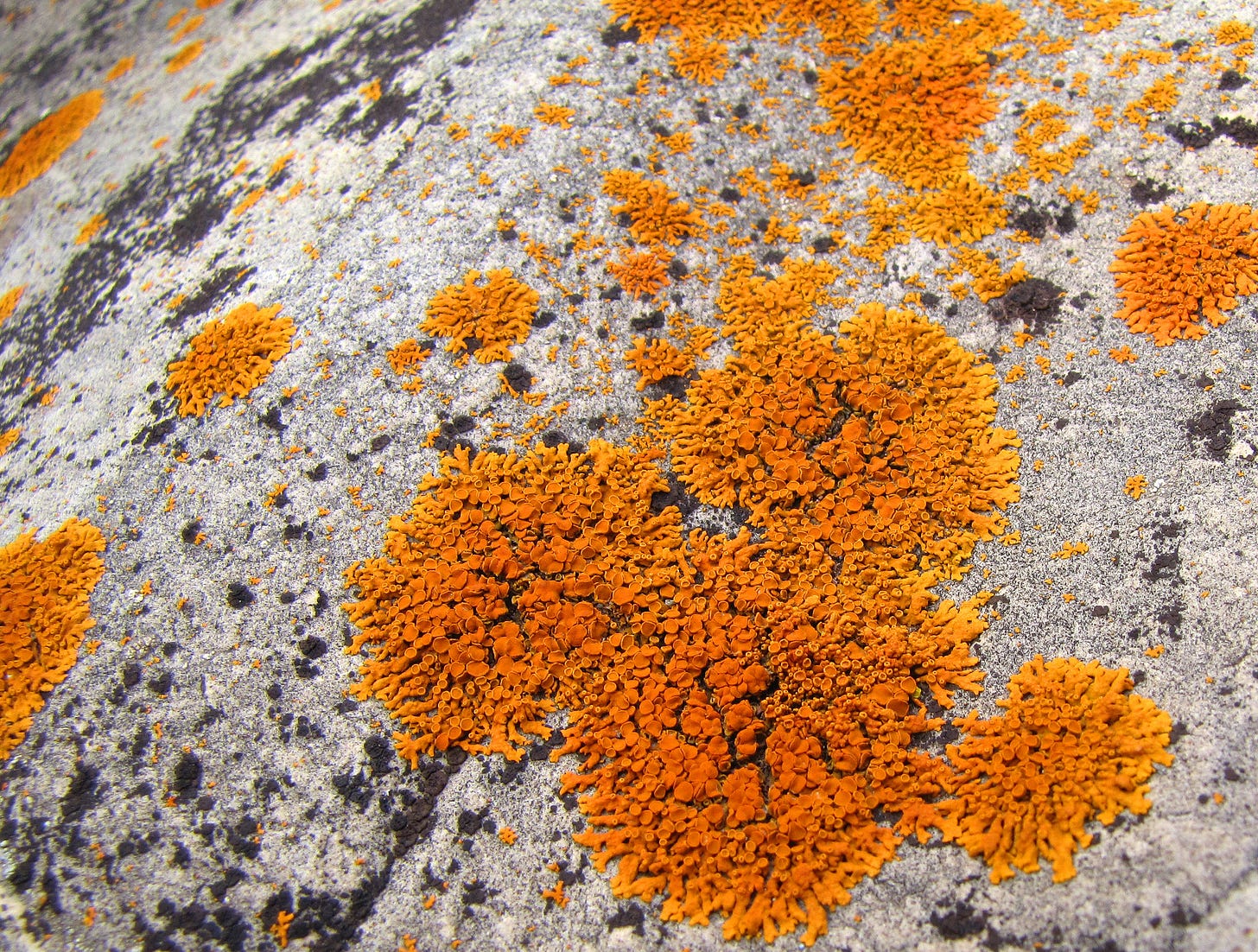
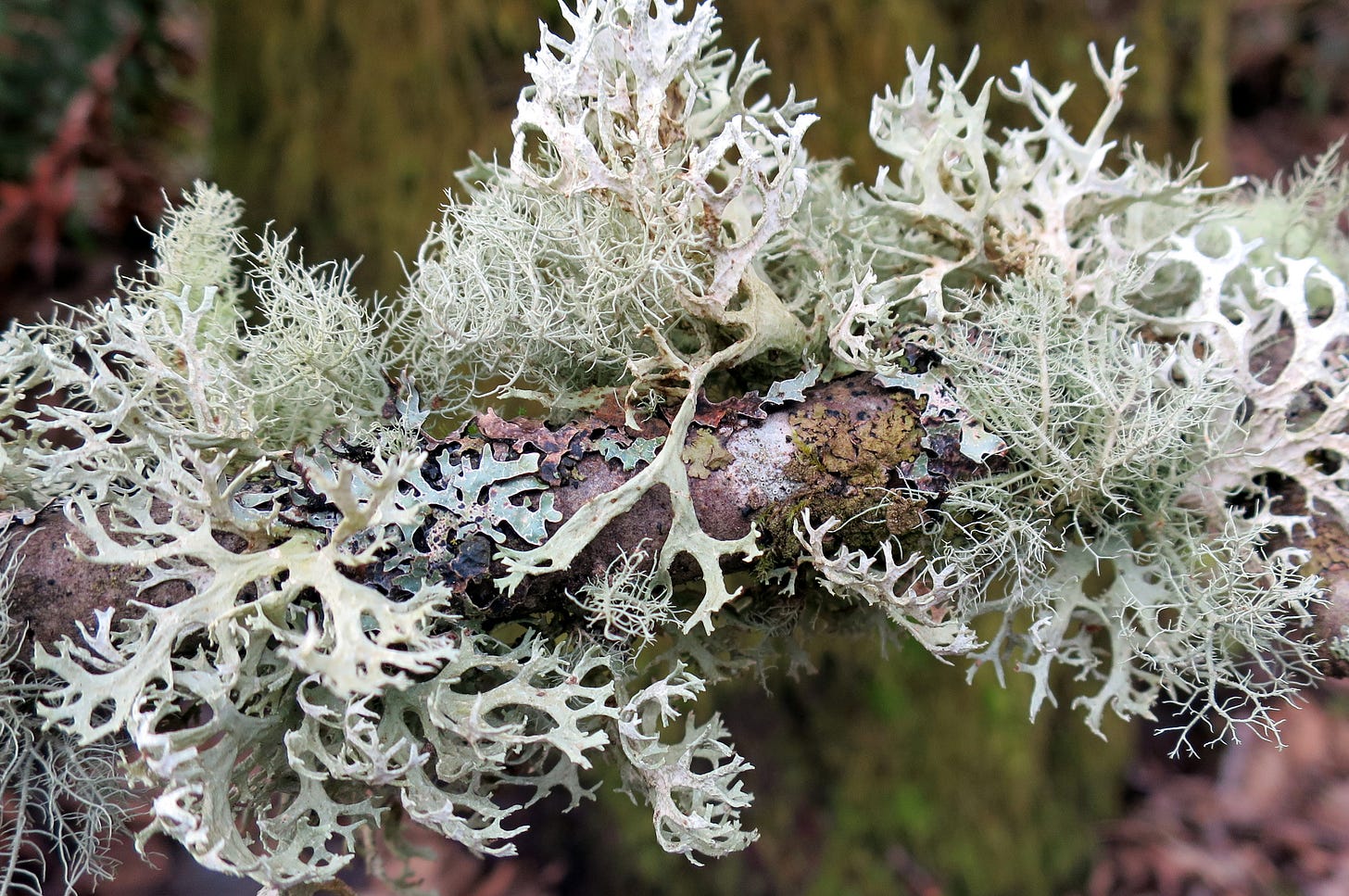

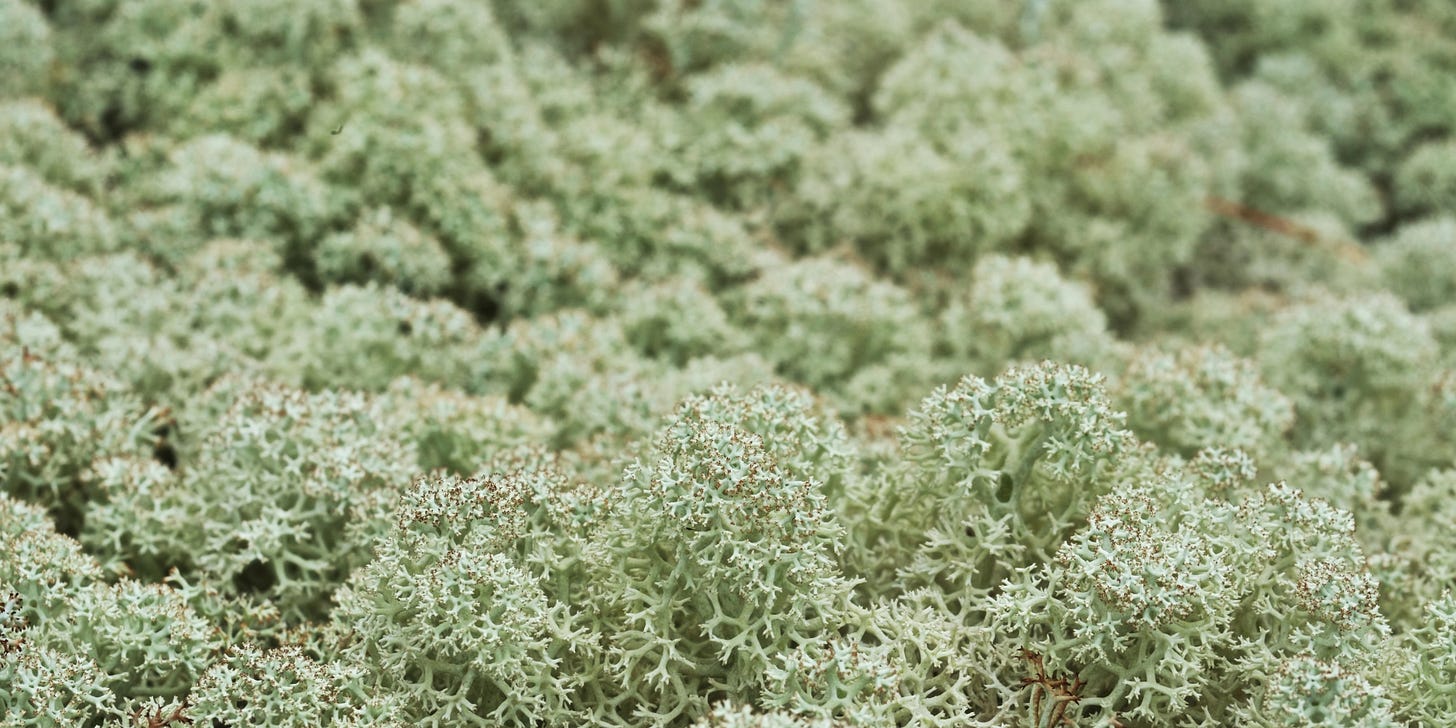
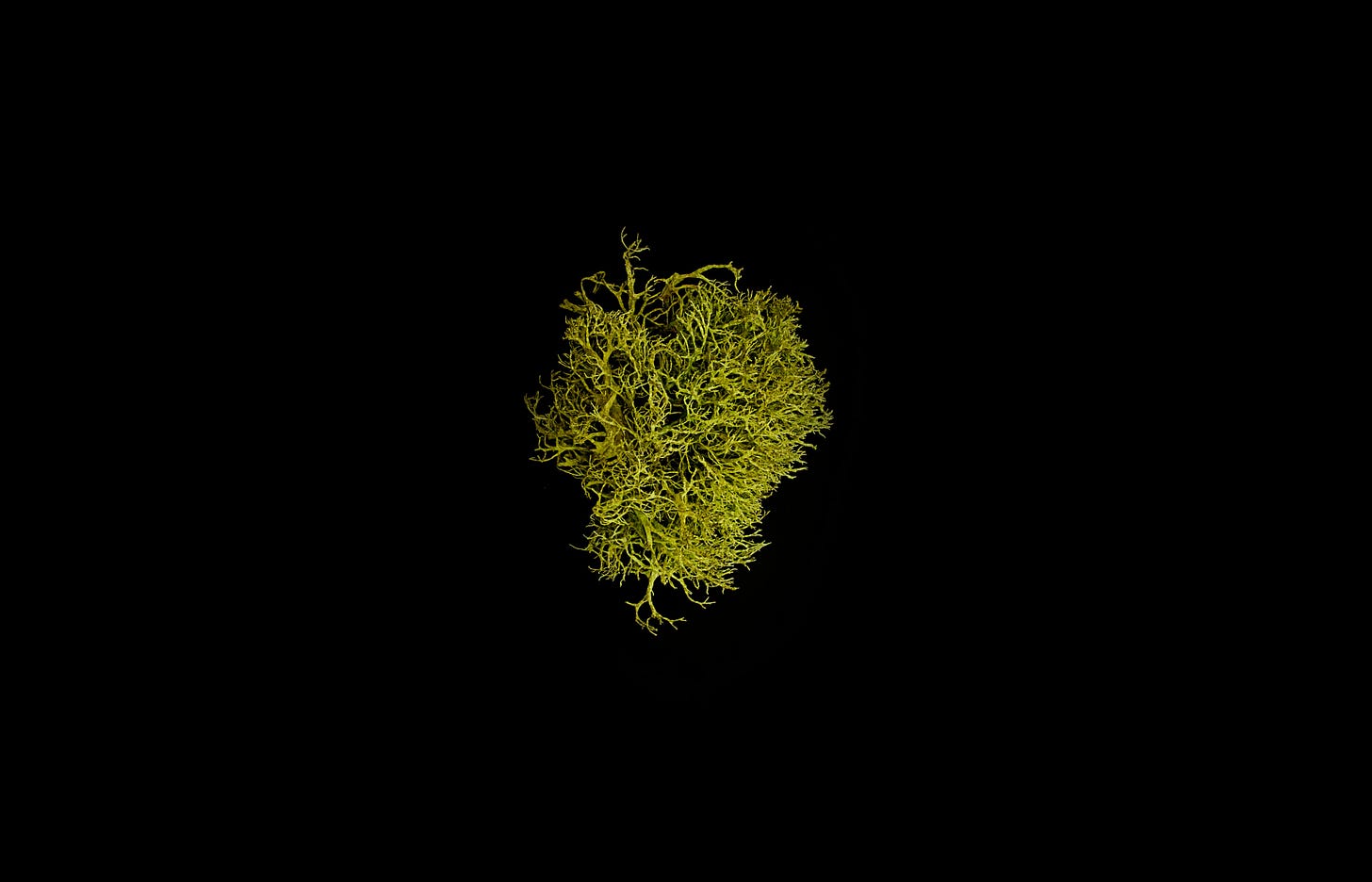






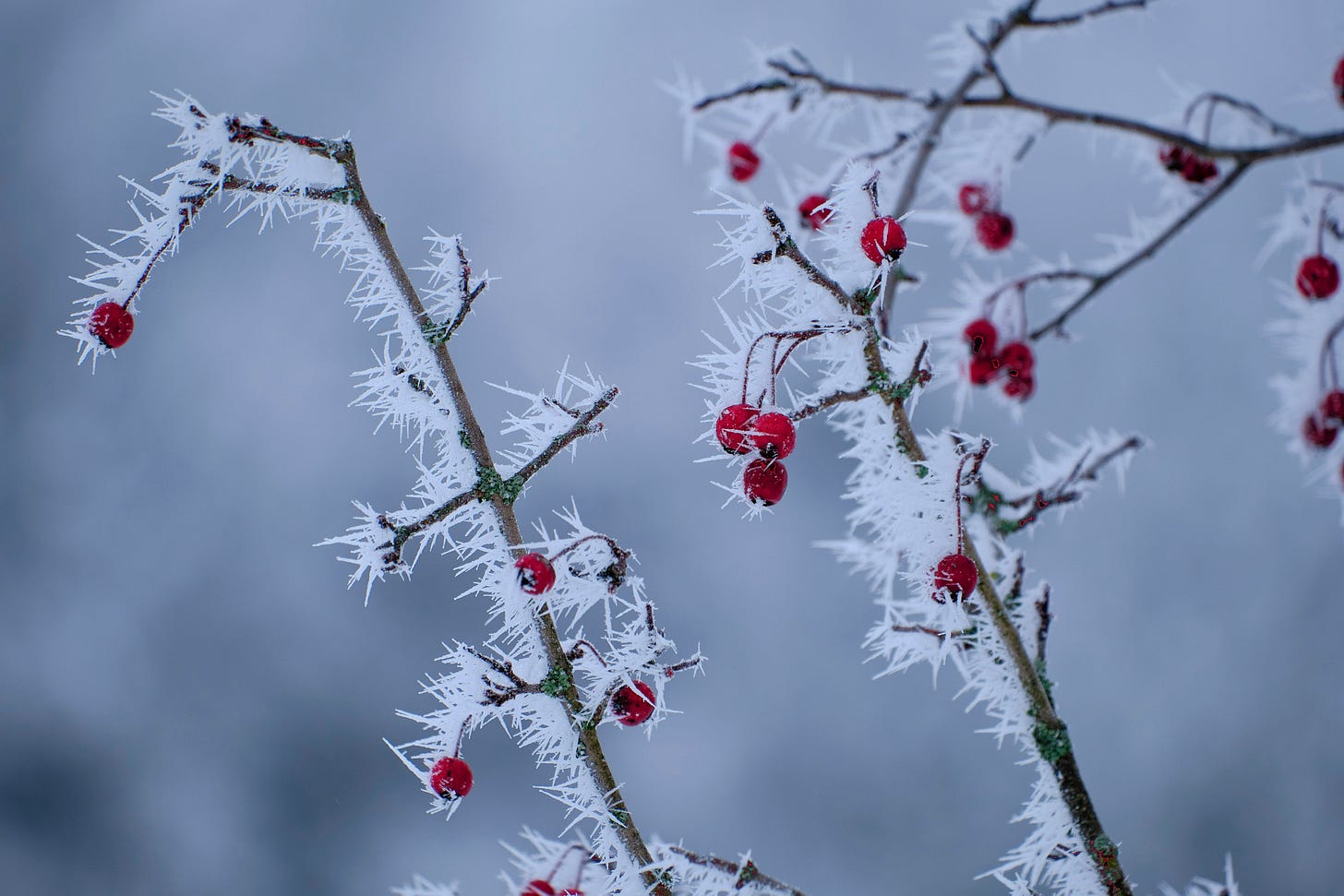


Happy Thanksgiving all!! When guiding in the BWCA I was treated to a lichen meal... the cook fried the dark leafy lichens in butter.
I'm grateful for the suggestion of the moss field guide! I've been lamenting my inability to identify moss (and lichen to a lesser extent) and that looks like a great place to start. I was surprised that Reindeer Moss rang a bell in the back of my brain and then realized I was actually thinking of Caribous Moss (from an essay of the same name in Sigurd Olson's "The Singing Wilderness"). However, a Google search tells me they are one and the same so I guess I really do need a field guide for moss and lichen since I am obviously out of my depth!